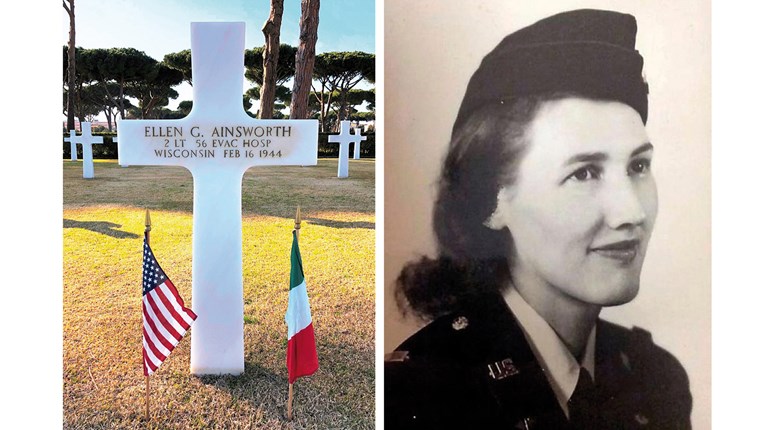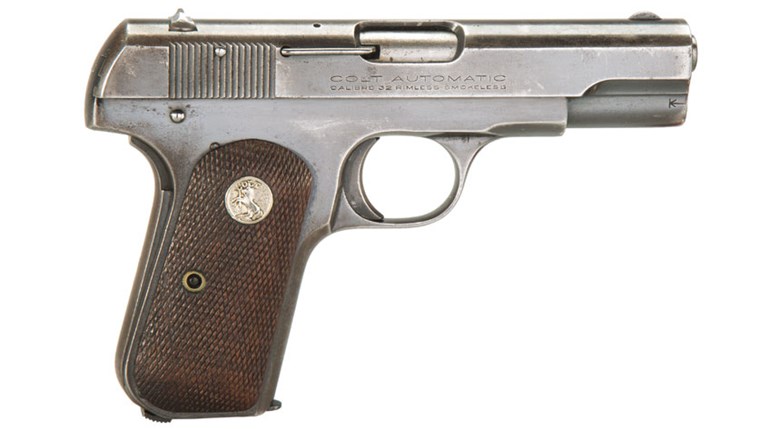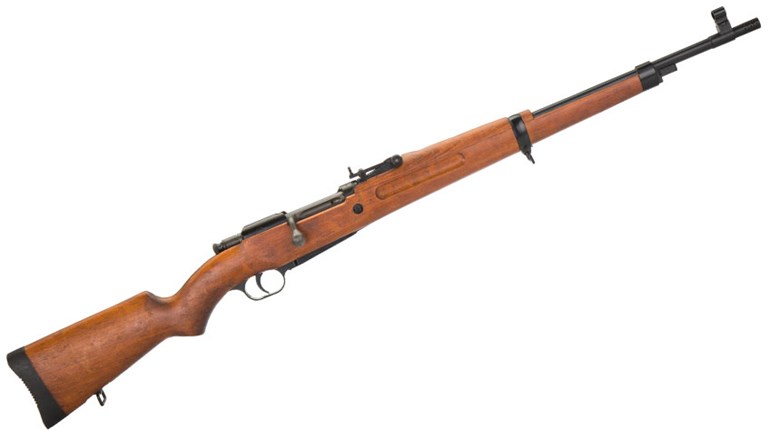
This article appeared originally as "Classics: Bushmaster Arm Pistol" in the Classics section of the March 2017 issue of Shooting Illustrated. To subscribe to Shooting Illustrated magazine, visit the NRA membership page here and select Shooting Illustrated as your member magazine.
Innovation and evolution in small-arms design closely defines the three decades that followed World War II. Even as battle rifles like the CETME, FAL, G3 and M14 armed military forces around the world, this era saw the simultaneous development toward special-purpose individual weapons for non-combat arms personnel. The United States Air Force particularly recognized that aircrewmen needed something more compact than a rifle but larger than a pistol and more powerful than a submachine gun. We all know where this story ends: with small-caliber Personal Defense Weapons (PDW) like the FN P90 and the Heckler & Koch MP7, but the early origins of the PDW have largely faded into obscurity.

Since 1952, the Air Force had been issuing the M6 Aircrew Survival Weapon but, because it was chambered in .22 Hornet and .410-bore, it could not be used as an effective personal-defense weapon. Something possessing more firepower than a .38 Spl. revolver was needed, so in 1964, a modified AR-15 carbine designated the Model 608 was briefly tested, but not adopted. Although effective and reliable, the 608 was 29 inches long and weighed 4.7 pounds, and the Air Force wanted something even smaller and lighter. Toward that end, it entered into a contract with Colt’s Military Arms Division in 1968 to develop an Individual Multi-Purpose weapon. This “IMP” would be capable of delivering controllable full-auto fire and could therefore be used for both survival and combat.
Dale Davis, of the USAF Armament Laboratory, came up with a basic concept for a stockless, gas-operated bullpup pistol that could be fired with one hand by bracing the action against the shooter’s forearm and biceps. To make the IMP truly ambidextrous, the pistol grip/trigger-group assembly was given the freedom to cant 38 degrees to either side of the receiver. It was chambered for a still relatively new intermediate cartridge: .221 Rem. Fireball (5.56x36 mm). Developed for the Remington XP-100 bolt-action pistol in 1963, the .221 Fireball was optimized specifically for shorter-length barrels by scaling down the .222 Rem. rifle cartridge. It fired a 52-grain bullet at 2,500 fps and generated the kind of low-recoil impulse that would be needed to make the IMP singlehandedly controllable as per Air Force specifications.
Colloquially known as the IMP-221, the Air Force gave the weapon the official designation GUU-4/P. These USAF prototypes were made with a nickel-plated sheet-steel upper receiver and a solid-aluminum lower receiver that included a magazine housing for the weapon’s proprietary 30-round detachable-box magazine. The rear of the lower receiver was also the mounting point for a crude rear sight that could be adjusted to the 2-o’clock position for left-handed shooters or the 10-o’clock position for right-handed shooters. Although the GUU-4/P functioned reliably, it just did not provide the kind of accuracy the Air Force expected and, despite modifications that sought to correct that shortcoming, the project was eventually scrapped.
Nevertheless, the IMP lived on even after the Air Force decided to pass on the design because a U.S. Army Special Forces veteran named Mack W. Gwinn, Jr. introduced it to the civilian shooting world as a Title 1 firearm in 1972. His company, Gwinn Firearms, began manufacturing a semi-automatic only version of the IMP that was marketed as the Bushmaster pistol. Gwinn’s civilian version is similar to the GUU-4/P in so far as it retains the same basic bullpup anatomy as Colt’s Air Force prototypes as well as the same gas-piston-operating system, but the Bushmaster differs in one critical area: caliber.
Gwinn chose to chamber his civilian version for the popular 5.56 NATO cartridge, and he also chose to modify the lower receiver to feed from readily available AR-15/M16 magazines. The Bushmaster also uses a rotating lock bolt head, similar to the AR-15/M16 and even makes use of several AR-15/M16 parts like the grip, magazine-release button, safety selector, hammer, disconnector, firing pin and various springs. At first, Gwinn continued using sheet steel to make the upper receivers of these guns, but then eventually switched to solid aluminum for both uppers and lowers.
Eventually, Gwinn Firearms took the name of its introductory product to become Bushmaster Firearms—a company that lives on today as an industry leader in the production of AR-15-type rifles. In fact, Bushmaster’s early corporate logo featured a coiled snake and the profile of an IMP. Although the company ceased production of the gun in 1988, examples can still be found on the collector’s market today. To the 21st-century shooter, an odd duck like the Bushmaster Arm Pistol may seem a relic from five decades past, but it marks an important moment in the evolution of 20th Century small arms when the modern PDW was born.




































